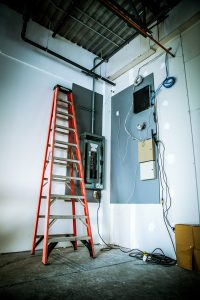Proper grounding and bonding are fundamental aspects of electrical systems that ensure safety, reliability, and efficiency. As outlined in Article 250 of the National Electrical Code (NEC), understanding and implementing these connections correctly is crucial. In this blog post, we’ll delve into the methods outlined in NEC and explore how to answer exam questions that are based on using proper grounding and bonding connections effectively.
Understanding Grounding and Bonding:
To answer exam questions correctly it’s essential to grasp the concepts of grounding and bonding.
Grounding refers to connecting electrical systems to the earth or to a conductive body that serves in place of the earth, ensuring that any potentially dangerous currents are safely diverted. Bonding, on the other hand, involves connecting metallic objects to ensure electrical continuity and to prevent the buildup of dangerous voltages between them.